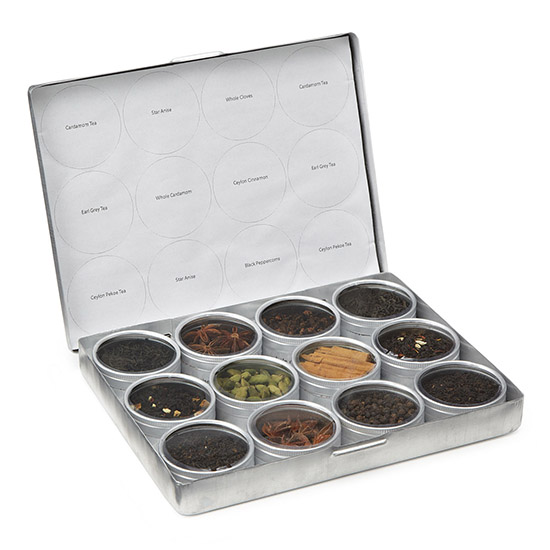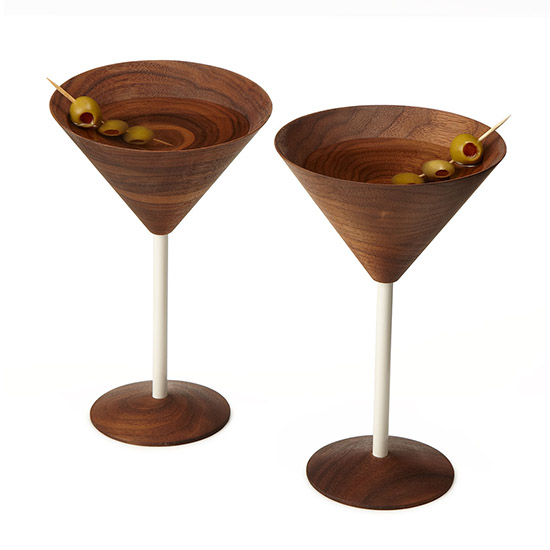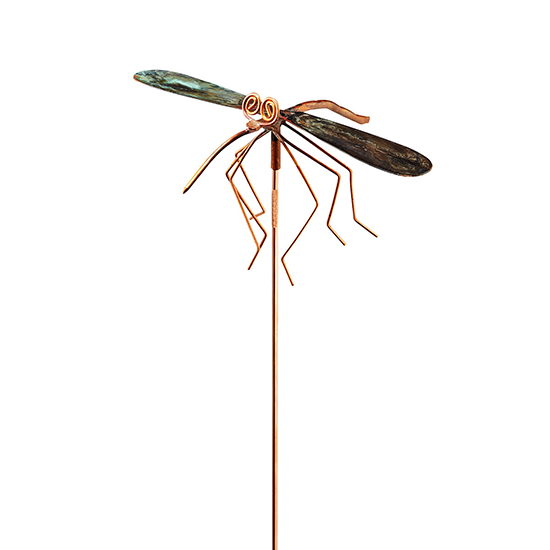 If this were a multiple choice question, the answer would have to be “All of the above,” because there are actually several teatimes throughout the day. Afternoon tea, as we think of it now, is usually credited to Anna Russell, Duchess of Bedford. Sometime in the 1840s, she began requesting a tea and refreshments to help stave off that afternoon “sinking feeling”, and invited her friends to enjoy it with her as well—thus giving birth to the tea party. This afternoon tea should not be confused, however, with “high tea.” High tea is a name for a substantial evening meal of hearty fare, traditionally enjoyed by the working class once their day’s labor was complete. And for those who weren’t satisfied with teatime merely in the afternoon and evening, an additional teatime can be enjoyed in the morning. Called “elevenses,” it offers tea and cakes as the perfect way to sustain you through that long gap between breakfast and lunch.
If this were a multiple choice question, the answer would have to be “All of the above,” because there are actually several teatimes throughout the day. Afternoon tea, as we think of it now, is usually credited to Anna Russell, Duchess of Bedford. Sometime in the 1840s, she began requesting a tea and refreshments to help stave off that afternoon “sinking feeling”, and invited her friends to enjoy it with her as well—thus giving birth to the tea party. This afternoon tea should not be confused, however, with “high tea.” High tea is a name for a substantial evening meal of hearty fare, traditionally enjoyed by the working class once their day’s labor was complete. And for those who weren’t satisfied with teatime merely in the afternoon and evening, an additional teatime can be enjoyed in the morning. Called “elevenses,” it offers tea and cakes as the perfect way to sustain you through that long gap between breakfast and lunch.
 “3… 2… 1… Blastoff!” It seems like the only way to prepare for a launch, right? But, no. At the time it was first used, the convention was simply to count up in the usual way: “1… 2… 3… Go!” When the countdown was first used in 1929, its purpose was not to precisely synchronize a team working together to create a complex event. Its purpose was the create suspense. And its originator was not a scientist, but the brilliant Austrian filmmaker Fritz Lang. Lang, best known for his movies Metropolis and M, was working on a science fiction film called Woman in the Moon that featured a dramatic rocket launch, preceded by a countdown of the final ten seconds before launch. Rocket scientist Wernher von Braun was a fan of the movie, and brought the countdown to zero with him when he came to America.
“3… 2… 1… Blastoff!” It seems like the only way to prepare for a launch, right? But, no. At the time it was first used, the convention was simply to count up in the usual way: “1… 2… 3… Go!” When the countdown was first used in 1929, its purpose was not to precisely synchronize a team working together to create a complex event. Its purpose was the create suspense. And its originator was not a scientist, but the brilliant Austrian filmmaker Fritz Lang. Lang, best known for his movies Metropolis and M, was working on a science fiction film called Woman in the Moon that featured a dramatic rocket launch, preceded by a countdown of the final ten seconds before launch. Rocket scientist Wernher von Braun was a fan of the movie, and brought the countdown to zero with him when he came to America.
 In 1965, when the Soviets were the enemy and the transistor radio was cutting edge equipment, the U.S. Congress began hearings on the topic of electronic surveillance. The star witness was Hal Lipset, private investigator from California who was renowned for his high-tech (and, some would say, “sleazy”) techniques for spying on people. Lipset stunned the politicians and the assembled press with is array of bugs, including one hidden underneath a rose petal in the bouquet displayed before the podium. But the device that seemed to steal the show was a tiny microphone and transmitter disguised as a martini olive, with its toothpick acting as an antenna. Did the CIA snap up that technology, ushering in an era of spies with James Bond sophistication? Nope. The martini mic had one small flaw. It would short circuit as soon as you tried pouring alcohol in the glass.
In 1965, when the Soviets were the enemy and the transistor radio was cutting edge equipment, the U.S. Congress began hearings on the topic of electronic surveillance. The star witness was Hal Lipset, private investigator from California who was renowned for his high-tech (and, some would say, “sleazy”) techniques for spying on people. Lipset stunned the politicians and the assembled press with is array of bugs, including one hidden underneath a rose petal in the bouquet displayed before the podium. But the device that seemed to steal the show was a tiny microphone and transmitter disguised as a martini olive, with its toothpick acting as an antenna. Did the CIA snap up that technology, ushering in an era of spies with James Bond sophistication? Nope. The martini mic had one small flaw. It would short circuit as soon as you tried pouring alcohol in the glass.
 Those flashes of light at twilight might seem like a lasting symbol of summer magic, but the number of lightning bugs continues to diminish each year. What can you do to help keep them aglow? Many species of firefly live on the ground during the day, so avoid using chemical fertilizers or pesticides, and try not to mow your lawn more often than necessary. If possible, you can offer them a welcoming habitat by including areas of longer grass or a water feature into your landscaping. And the easiest way to help? Close your window blinds and turn off exterior lighting at night. Fireflies rely upon their blinking light to attract mates, signal danger and more, and light pollution blocks this ability to communicate. But offer them a delightful oasis of darkness, and they’ll keep shining bright.
Those flashes of light at twilight might seem like a lasting symbol of summer magic, but the number of lightning bugs continues to diminish each year. What can you do to help keep them aglow? Many species of firefly live on the ground during the day, so avoid using chemical fertilizers or pesticides, and try not to mow your lawn more often than necessary. If possible, you can offer them a welcoming habitat by including areas of longer grass or a water feature into your landscaping. And the easiest way to help? Close your window blinds and turn off exterior lighting at night. Fireflies rely upon their blinking light to attract mates, signal danger and more, and light pollution blocks this ability to communicate. But offer them a delightful oasis of darkness, and they’ll keep shining bright.
 Captain Kidd was one of the most notorious pirates of the high seas. He was originally hired by the British crown as a privateer and pirate hunter, capturing ships of England’s enemies and splitting the loot with his royal patrons. However, a short temper, a rebellious crew and plenty of ill luck eventually led him to be branded a traitor. He was tried and executed in London in 1701, but no one was able to account for the vast treasure he must surely have collected over the years. At the time of his trial, a small cache of loot was discovered on Gardiners Island, in the Caribbean—possibly revealed by Kidd himself, in hope that it would buy him some clemency. In 2007, one of Kidd’s ships was discovered off the coast of the Dominican Republic. There are plenty of rumors of islands where his wealth might be buried, but the one sure place to find Kidd’s treasure? In fiction. From the year that he died, songs and stories memorializing the dread pirate filled pop culture, each exaggerating his deeds and his wealth more than the last. So, while maybe his treasure will one day be unearthed, there’s a much better chance that it’s simply unreal.
Captain Kidd was one of the most notorious pirates of the high seas. He was originally hired by the British crown as a privateer and pirate hunter, capturing ships of England’s enemies and splitting the loot with his royal patrons. However, a short temper, a rebellious crew and plenty of ill luck eventually led him to be branded a traitor. He was tried and executed in London in 1701, but no one was able to account for the vast treasure he must surely have collected over the years. At the time of his trial, a small cache of loot was discovered on Gardiners Island, in the Caribbean—possibly revealed by Kidd himself, in hope that it would buy him some clemency. In 2007, one of Kidd’s ships was discovered off the coast of the Dominican Republic. There are plenty of rumors of islands where his wealth might be buried, but the one sure place to find Kidd’s treasure? In fiction. From the year that he died, songs and stories memorializing the dread pirate filled pop culture, each exaggerating his deeds and his wealth more than the last. So, while maybe his treasure will one day be unearthed, there’s a much better chance that it’s simply unreal.
 That depends on how you use it. Cleopatra, for example, is purported to have eaten the largest pearl ever discovered, simply to impress Marc Anthony. The ancient historian Pliny the Elder recorded that she wanted to impress her lover with her immense wealth, and made a bet with him that she could spend 10 million sesterces (approximately $12,500) on a single meal. During the meal, she had her servants deliver a goblet of wine, into which she dropped her treasured pearl. The acetic acid in the vinegar dissolved the pearl, allowing her to drink it and win the bet. Did it indeed make her more beautiful? Well, it certainly seemed to work for Marc Anthony.
That depends on how you use it. Cleopatra, for example, is purported to have eaten the largest pearl ever discovered, simply to impress Marc Anthony. The ancient historian Pliny the Elder recorded that she wanted to impress her lover with her immense wealth, and made a bet with him that she could spend 10 million sesterces (approximately $12,500) on a single meal. During the meal, she had her servants deliver a goblet of wine, into which she dropped her treasured pearl. The acetic acid in the vinegar dissolved the pearl, allowing her to drink it and win the bet. Did it indeed make her more beautiful? Well, it certainly seemed to work for Marc Anthony.
 Any single woman who has ever felt frustration at the lack of available men might be surprised to know that it doesn’t start out that way. There are many factors that influence the determination of a child’s sex at conception, but statistically speaking, humans produce more boy babies born than girls by a margin of about 5%. But before accusing Mother Nature of gender bias, it should be pointed out that the numbers are evened out over time. Male babies are more likely to have health complications than females, and then as adults, factors such as risk-taking behavior and warfare combine to give men a shorter life expectancy. So, while there is a definite boom in boy babies, in the worldwide human population, the male to female ratio is nearly equal.
Any single woman who has ever felt frustration at the lack of available men might be surprised to know that it doesn’t start out that way. There are many factors that influence the determination of a child’s sex at conception, but statistically speaking, humans produce more boy babies born than girls by a margin of about 5%. But before accusing Mother Nature of gender bias, it should be pointed out that the numbers are evened out over time. Male babies are more likely to have health complications than females, and then as adults, factors such as risk-taking behavior and warfare combine to give men a shorter life expectancy. So, while there is a definite boom in boy babies, in the worldwide human population, the male to female ratio is nearly equal.
 The story is often told that, during the sweltering days of the 1904 World’s Fair in St. Louis, an ice cream vendor ran out of bowls for his customers. His problem was solved by Earnest Hamwi, a Syrian vendor of waffle-like cookies who rolled one of his confections into a cone, forming the perfect, edible holder for a scoop of ice cream. But while Hamwi’s name is remembered as the ice cream cone’s inventor, plenty of other vendors at the Fair also claimed the idea was theirs. The treat was such an instant sensation that it spread like an avalanche from booth to booth, making it impossible to be sure who came first. Unless, of course, you discredit them all by acknowledging that waffle cone recipes could already be found in French cookbooks for at least 80 before that.”
The story is often told that, during the sweltering days of the 1904 World’s Fair in St. Louis, an ice cream vendor ran out of bowls for his customers. His problem was solved by Earnest Hamwi, a Syrian vendor of waffle-like cookies who rolled one of his confections into a cone, forming the perfect, edible holder for a scoop of ice cream. But while Hamwi’s name is remembered as the ice cream cone’s inventor, plenty of other vendors at the Fair also claimed the idea was theirs. The treat was such an instant sensation that it spread like an avalanche from booth to booth, making it impossible to be sure who came first. Unless, of course, you discredit them all by acknowledging that waffle cone recipes could already be found in French cookbooks for at least 80 before that.”
